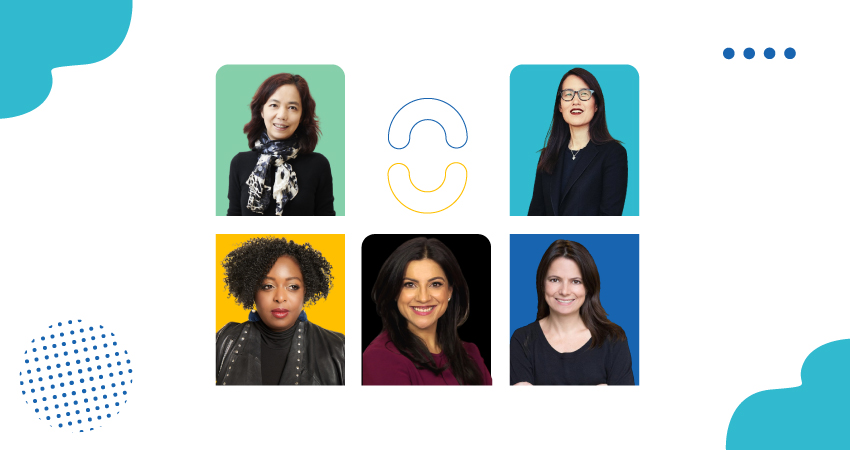
Understanding the Digital Divide
What is the digital divide and how does it impact women’s empowerment?
The digital divide refers to the gap between those who have access to technology and those who do not. This divide has a significant impact on women’s empowerment as it prevents them from accessing vital resources and opportunities that can improve their lives. The International Telecommunications Union (ITU) reports that around 50% of the world’s women are offline. Despite the increasing availability of technology, women are still facing barriers to accessing and using it, particularly in developing countries. In this blog, we will explore the digital divide, its impact on women’s empowerment, and the barriers that prevent women from accessing and using technology.
Magnitude and Impact of the Digital Divide on Women
According to the United Nations, 2.2 billion people lack access to the internet, with the majority of them residing in developing countries. Women are disproportionately affected by this, with an estimated 300 million fewer women having access to the internet than men. This digital gender gap has far-reaching consequences for women’s economic, social, and political empowerment.
The digital divide affects women’s economic empowerment by limiting their access to job opportunities, markets, and financial services. Women who lack access to technology cannot benefit from the emerging digital economy, which has the potential to create new jobs and income-generating opportunities. Moreover, the digital divide limits women’s access to financial services, which are increasingly being delivered through digital channels. This limits women’s ability to save, invest, and access credit.
The Current Status of Women in Tech Fields
The current status quo of women’s involvement in technology jobs is disheartening, with statistics showing that only 17% of significant technology jobs, such as programming, systems analysis, or software development, are held by women, according to Eurostat. Additionally, women’s representation in sustainability-related occupations is less than 20%, which includes electrical, mechanical, and civil engineers. These numbers are concerning, especially as the Organization for Economic Co-operation and Development (OECD) reports a talent shortage in Europe, with approximately 1.4 million technology jobs and 2.4 million sustainability jobs waiting to be filled.
The problem is made worse by the fact that women are underrepresented in the degree categories that are essential for digital hiring pools for future technical roles. Women only represent 20% of graduates in information and technology degree programs, further exacerbating the gender gap in these fields.
Moreover, according to the International Telecommunication Union, only 63% of women were using the Internet in 2022, compared to 69% of men. This indicates that 259 million fewer women have access to the internet than men, even though women account for nearly half of the world’s population. Additionally, the World Economic Forum warns that 75% of the jobs by 2050 will be related to STEM areas. Yet today, women only hold 22% of positions in artificial intelligence, to name just one field.
According to the 2022 Gender Snapshot Report by the United Nations, a study of 51 countries showed that 38% of women had experienced online violence. Moreover, women’s exclusion from the digital world has had severe economic consequences, shaving off $1 trillion from the gross domestic product of low and middle-income countries in the last decade. This loss will escalate to $1.5 trillion by 2025 if no corrective measures are taken.
Through initiatives like DigitALL, we can work towards a more equitable society by empowering women to pursue careers in these fields, and in turn, help companies meet their talent needs while reaping the benefits of a more diverse workforce.
Women Face Systemic Restrictions Around the World
The digital divide also affects women’s social empowerment by limiting their access to education, healthcare, and social networks. Access to education and healthcare services is increasingly delivered through digital channels. Women who lack access to technology cannot benefit from these services, which are critical for their well-being and development. Moreover, the digital divide limits women’s access to social networks, which are increasingly being created and maintained through digital channels. This limits women’s ability to connect with others and advocate for their rights.
Intersectionality: Understanding the Complexity of the Digital Gender Divide
Addressing the intersectionality of the digital gender divide is crucial in promoting inclusive and equitable digital access. Women from diverse backgrounds, including those from marginalized and underrepresented communities, face multiple and overlapping forms of discrimination, including gender, race, ethnicity, religion, sexual orientation, and socioeconomic status. These intersecting factors create unique barriers to digital access and use, which require a comprehensive and intersectional approach to overcome.
For instance, women from low-income backgrounds may lack the financial resources to access digital devices and connectivity, and women from conservative cultures may suffer from systemic misogyny. In contrast, women from minority communities may face language barriers and discrimination in accessing technology, which can limit their participation in the digital economy. Similarly, women with disabilities may encounter physical barriers in accessing digital devices and software, which can further marginalize them.
To address these intersecting barriers, digital inclusion programs must be designed with an intersectional lens, recognizing and addressing the unique needs and challenges faced by women from diverse backgrounds. This requires engaging with and involving women from different backgrounds in the design and implementation of digital inclusion programs, ensuring that their voices and perspectives are heard and valued.
Moreover, it requires a collaborative effort across different sectors, including governments, civil society, and the private sector, to address the systemic and structural barriers that prevent women from accessing and using technology. By working together and taking an intersectional approach to digital inclusion, we can bridge the digital gender divide and promote equitable and inclusive access to technology for all women, regardless of their background or identity.
I. Barriers to Women’s Access to Technology
Socio-economic factors as a barrier to access
Women in developing countries are more likely to live in poverty and have lower levels of education, making it difficult for them to afford technology and access digital services. In addition, women’s access to technology is often limited by their geographic location, with women living in rural areas having less access to technology than those living in urban areas.
Cultural norms and practices perpetuating the digital gender gap
In some cultures, women are discouraged from using technology or are not allowed to access it due to gender-based stereotypes and discrimination. Moreover, women who do access technology are often subject to harassment and violence, which further limits their ability to use technology.
Education and digital literacy as factors in women’s access to technology
Education is also a significant factor in bridging the digital divide. Women who lack basic education and digital literacy skills find it challenging to access and use technology, limiting their opportunities for economic and social advancement. In some cases, women are not aware of the potential benefits of technology, and therefore do not see the need for it.
II. Overcoming the Digital Divide: Promoting Digital Inclusion and Reducing the Gender Gap
Governments and private organizations should unify to address the systemic gender issues
To overcome the digital divide, there needs to be a concerted effort to address the barriers that prevent women from accessing and using technology. Governments, civil society organizations, and private companies must work together to promote digital inclusion and reduce the gender gap. This includes policies and programs that provide affordable and accessible technology, digital literacy training for women, and initiatives that address cultural and socio-economic barriers. Governments can promote digital inclusion by providing affordable and accessible technology, digital literacy training for women, and initiatives that address cultural and socio-economic barriers.
There are numerous examples of successful initiatives that have addressed the digital divide and promoted women’s access to technology. In India, the government launched the Digital India initiative, which aims to provide affordable and accessible technology to all citizens. The program includes the distribution of free smartphones to women in rural areas, helping them to access digital services and improve their economic opportunities. Similarly, in Kenya, the Women’s Economic Empowerment (WEE)’s strategy for 2020-2025 includes programs for digital literacy training and access to finance and markets for women entrepreneurs, enabling them to start and grow their businesses.
Furthermore, there should be concerted efforts on all fronts to weed out the root of gender inequality.
Bringing About Gender Equity
1. Encourage Girls to Pursue STEM Education
One of the primary reasons for the gender gap in technology jobs is the lack of female representation in STEM fields. By encouraging girls to pursue STEM education, we can increase the number of women entering technology jobs. This can be achieved by offering scholarships, mentorship programs, and support groups for girls interested in STEM fields.
2. Promote Gender Diversity in Hiring
To close the gender gap in technology jobs, companies need to prioritize gender diversity in their hiring process. They should focus on identifying and addressing any unconscious biases that may exist in their recruitment process. Additionally, they can implement policies and practices that promote inclusivity, such as offering flexible work hours and creating a supportive work environment, and adopt AI-based recruitment automation platformsto ensure bias-free hiring.
3. Upskilling Women for the Digital Era
Another way is to empower women already in the field. To bridge the digital gender divide, we must also prioritize upskilling women with the technical and soft skills needed to thrive in the digital era. This means providing training programs, mentorship opportunities, and access to resources that can help women advance in their careers. Companies can also create a platform for women in technology to network and share their experiences, challenges, and successes. By investing in women’s development, we can help close the gender gap in technology jobs and empower more women to become leaders in the industry.
4. Innovating for Gender Equality in Technology and Beyond
Innovation is key to bridging the digital gender divide and promoting gender equality in technology and beyond. Companies must embrace innovative strategies that prioritize diversity and inclusion, such as hiring for skills rather than degrees, tracking percentages of representation, and committing to equal representation. By fostering a culture of innovation and inclusivity, we can create a more equitable society and drive positive change for women in technology and sustainability jobs.
5. Promoting Remote Working Job Opportunities
Work from home jobs for females, can play a significant role in promoting gender equity by addressing various barriers and providing equal opportunities. Here are several ways in which these jobs can contribute to gender equity: flexible work arrangements, reducing gender bias and discrimination, increased access to opportunities, enhanced work-life balance, and addressing the gender pay gap.
Addressing The Role Of Men in Bridging the Digital Gender Divide
1. Engaging Men to Bridge the Digital Gender Divide
While the digital divide disproportionately affects women, engaging men in promoting digital inclusion and reducing the gender gap is equally important. Men can play a crucial role in creating an enabling environment that supports women’s access to technology. It is vital to recognize that men’s participation in these efforts is not about giving them control or taking away from women’s empowerment, but rather about ensuring that both men and women are equal partners in promoting digital inclusion. After all, in order to liberate half the population, the participation of the other half will prove to be powerful.
2. Men as Powerful Advocates for Digital Inclusion
One way to engage men is to create awareness about the issue and its impact on women’s empowerment. Men who understand the benefits of digital inclusion and the negative consequences of the digital gender gap can become powerful advocates for change. Men can also play a role in addressing cultural and social barriers that prevent women from accessing and using technology. For example, they can challenge gender-based stereotypes and discrimination and promote a more inclusive and equitable society.
3. Designing Inclusive Digital Inclusion Programs with Men’s Support
Another way to engage men is to involve them in designing and implementing digital inclusion programs. Men can provide valuable insights into the needs and perspectives of women in their communities, helping to ensure that digital inclusion programs are relevant and effective.
The Power of Gender Diversity in Business
Studies have shown that companies with diverse leadership teams outperform those without. In particular, companies with at least 30% women on their boards have better environmental scores and invest more in R&D compared to those without any women on their boards. This suggests that companies that deploy female talent are more innovative and sustainable.
Additionally, McKinsey research has found that companies in the top quartile for women on executive teams are more likely to have above-average profitability. This demonstrates that promoting gender diversity at all levels of a company can have a positive impact on the bottom line.
To harness the power of gender diversity, companies must prioritize creating a culture of inclusivity and actively work to promote diversity in their leadership teams. By doing so, companies can tap into new sources of innovation, improve sustainability, and increase profitability.
A Brief Look at Barrier-breaking Trailblazers Around The Globe
Let’s take a look at 5 women who have shattered the glass ceiling with pure grit and determination and are innovators and pioneers in the tech space!
Reshma Saujani, founder and CEO of Girls Who Code
Reshma Saujani is the founder and CEO of Girls Who Code, a nonprofit organization aimed at closing the gender gap in technology and engineering by teaching girls to code.
Kimberly Bryant, founder of Black Girls Code
Kimberly Bryant is the founder of Black Girls Code, a San Francisco nonprofit that exposes girls of color ages 7 to 17 to STEM subjects with the goal of teaching 1 million Black girls to code by 2040.
Fei-Fei Li, co-director of Stanford’s Human-Centered AI Institute
Fei-Fei Li is the co-director of Stanford’s Human-Centered AI Institute, focusing on cognitive and computational neuroscience and machine learning to improve AI image recognition ability. She also founded AI4ALL, a nonprofit aimed at increasing diversity in the AI sphere through education, recruitment, mentoring, and training students in historically underserved communities.
Amy Hood, executive vice president and chief financial officer of Microsoft
Amy Hood is the first female CFO in Microsoft history, responsible for leading Microsoft’s worldwide financial organizations and recognized for leading Microsoft’s largest corporate initiatives. She ranked #28 in Forbes’ The World’s 100 Most Powerful Women list in 2022.
Ellen Pao, co-founder and CEO of Project Include
Ellen Pao is the co-founder and CEO of Project Include, an organization aiming to address and prevent sexism and gender discrimination in Silicon Valley and to improve diversity and inclusion within tech companies.
Gender Gap in Technology and Sustainability: A Call to Action for Bridging the Digital Divide
Overall, the digital divide is a critical issue that has far-reaching consequences for women’s empowerment and access to opportunities. Women are disproportionately affected by the digital gender gap, with significant barriers preventing them from accessing and using technology. This gap not only limits their access to education, healthcare, and job opportunities but also affects their ability to advocate for their rights and connect with others.
However, initiatives like DigitALL are working towards bridging the digital gender divide by empowering women to pursue careers in technology and addressing the unique barriers faced by women from diverse backgrounds. Through an intersectional approach, we can ensure that all women, regardless of their background or identity, have equitable and inclusive access to technology.
To overcome the digital divide, we need a collaborative effort across different sectors, including governments, civil society, and the private sector, to address the systemic and structural barriers that prevent women from accessing and using technology. By working together and taking an intersectional approach to digital inclusion, we can create a more equitable and just society, where all women have the opportunity to fulfil their potential and contribute to the development of their communities and the world at large. Hence, let’s continue to empower all women and make the world more equitable.






